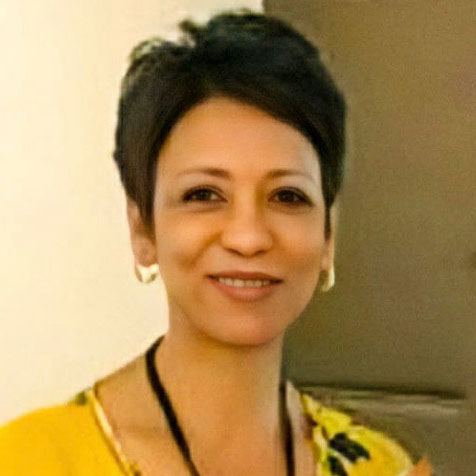
Member Spotlight for January 2022:
Petronella Samuels

Petronella Samuels, M.Sc.
Head Radiographer
University of Cape Town
Cape Town, South Africa
ISMRT Member since 2016
MR is a multi-faceted imaging modality. I love that, as technologists/radiographers, we not only get to specialize in MR, but we also have an array of focus areas to choose from such as safety, cardiac, and fMRI. What inspires me most about MR is that it is a high-end, non-invasive imaging tool that can be used to guide many interventional procedures before and during surgery. There are many success stories of children and adults who underwent fMRI at our facility for tumour resections and were left with no motor or speech deficit post-surgery.
The academic hospital where I was employed procured its first MR scanner in 2002, and I was one of five radiographers chosen to be trained. We attended numerous lectures and workshops on MR physics to learn the fundamentals of the imaging modality. At first it was quite daunting, but with practice it became easier. The workload was predominantly clinical at first, focusing mainly on neuro-imaging, but it rapidly evolved to include whole-body imaging. CMR was introduced in 2006. It was complex, tricky, and extremely challenging, but once the penny dropped, I loved it. I became unit manager in 2007 and stayed at Groote Schuur Hospital until 2015 before taking on my current position as head radiographer at the Cape Universities Body Imaging Centre (CUBIC).
While undergoing MR training, we couldn’t find any volunteers and decided to use each other as guinea pigs. I became a bit suspicious when I was kept on the table for an exceptionally long time. I later found out that I had an incidental finding, an epidermoid cyst, which had to be excised a week later. I was out of circulation for three months but returned to work to complete my MR training. My story was featured in one of our top SA magazines entitled “How My Job Saved My Life.”
A typical day in my life kicks off with getting ready for work, which can start as early as 7 am. My kids are grown, so I don’t have to see them off in the morning. The commute to work is fairly stress-free, especially since COVID, with many people working from home. Work duties include scanning, setting up protocols for new studies, lecturing students, and attending meetings. I recently completed my master’s degree, which took up most of my time after hours and weekends. In the evenings, I prepare dinner (not that often these days as my daughter loves cooking) and go to the gym afterward. We love playing Chinese dominoes and Boggle as a family.
I am married with three daughters and a grandson. We have a Labrador, Lexy, who is generally very meek but takes her responsibility of protecting our family very seriously! Even a dip in the swimming pool can be a mission as she is constantly checking that you are not drowning! I have a very solid support structure made up of family, close friends, and colleagues. I enjoy hiking: it’s therapeutic and a great way to keep fit. I have hiked a few popular hiking trails including the Otter Trail, Whale Trail, and Fish River Canyon. I would love to climb Mount Kilimanjaro—while I’m still fit enough. Dancing is another favourite of mine, mostly Zumba, especially after a hectic day of work. My favourite television show is “Strictly Come Dancing.” I love word games, and I’m obsessed with French! I love listening and singing along to French songs. C’est magnifique!
I learnt about the ISMRT for the first time when I started working at my current job. My colleagues are physicists and members of the ISMRM, and this piqued my interest. I was speechless by the masses at my first meeting in Singapore! I have been a member of SMRT since 2015 and have been fortunate enough to attend every meeting since. I appreciate the educational programs, which can be accessed at any time and caters to every aspect of MR. The networking at the annual meetings is very exciting. I have been a member of the Global Relations Committee for three years and joined the Abstract Review Committee two years ago. Both committees offer great opportunities to collaborate with colleagues abroad. We can exchange ideas on how to enhance our skills and get to know each other a bit better. My favourite study groups are the cardiac, spectroscopy, placenta and fetal, and safety study groups. Most of our studies involve these applications, and safety is crucial. I have recently been nominated to serve on the ISMRT Governing Board.
